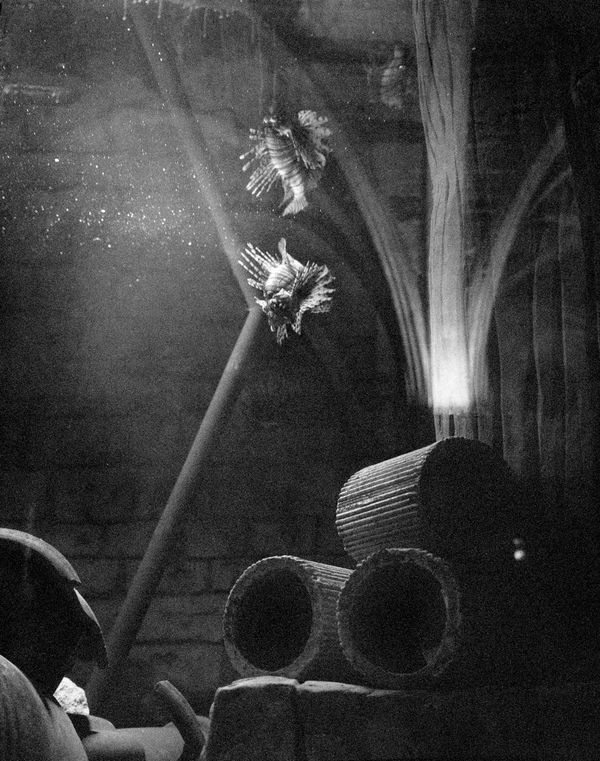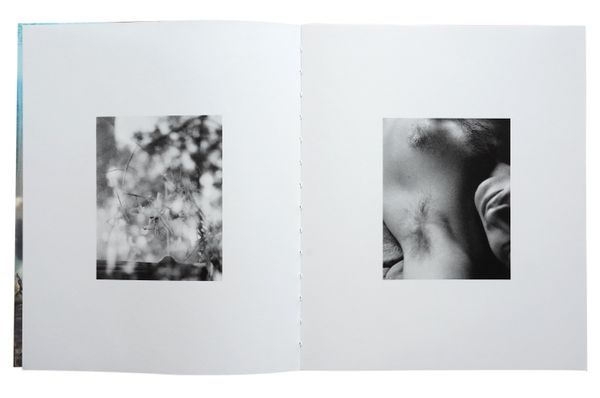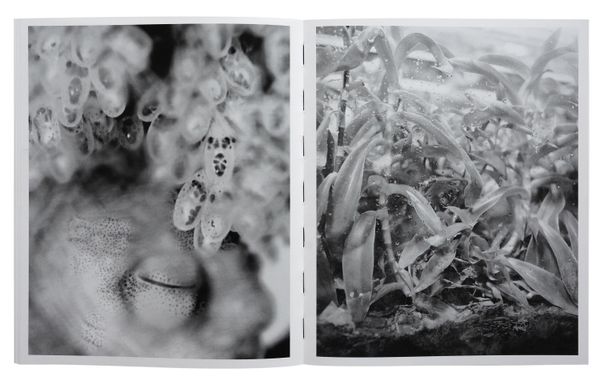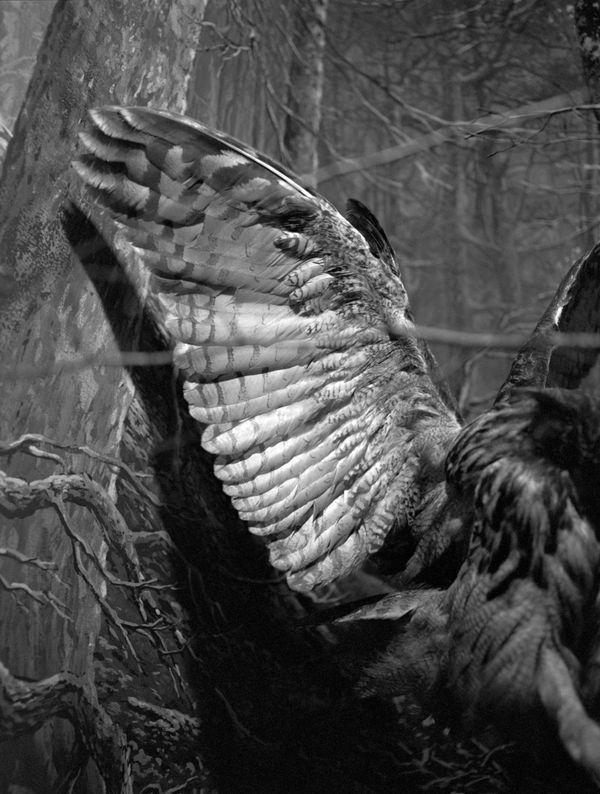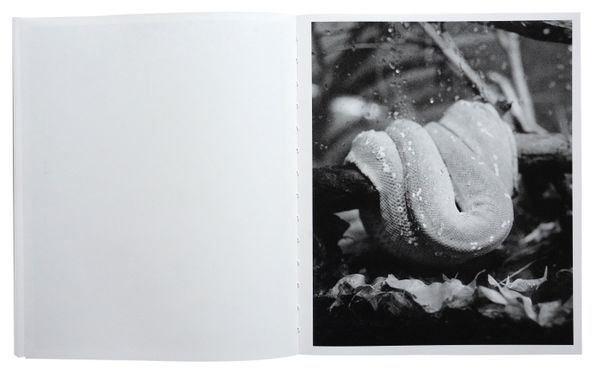Photobook Review: All Things Laid Dormant by Benedetta Casagrande
-
Published28 Nov 2024
-
Author
Published by Skinnerboox, Casagrande’s first book is a poetic visual essay on love and longing within environmental loss, extinction and ruination.
"How long we been asleep?". A poetic text by lee rae walsh, split between the first and the last page of All Things Laid Dormant, encapsulates Benedetta Casagrande’s photographs. Her and walsh’s language are equally slippery, delicate, and fragile. We feel as if constantly on the verge of something. Traversing thresholds. There is a constant sense of “almost”. Like the visual cues that appear right before sleeping. Broken sentences we try to formulate and then forget.
As a title, All Things Laid Dormant came to Casagrande while in this same transitional state. “I was falling asleep. I picked it as a working title, and then I did not change it”. As it often happens, temporary things end up staying with us. Provisionality and precariousness are the language spoken by Casagrande's images, too. Floating fish, fading imprints, a paw that seems about to move. A wet animal nose making us think of breath. Nothing is stable or frozen. Everything is precariously, intensely alive.
Yet many things are dead, too. I realize I’m projecting the impulse of living things - moving, walking, breathing - onto lifeless entities. Most often, I have no way of knowing whether what I am looking at is alive or not. Casagrande’s photographs of creatures are indeed mainly shot in museums, aquariums, and zoos. If animals aren’t dead, they are held captive, their species fading toward extinction. “I wanted to make work about life, about the love for life", she says, "and I ended up going places where everyone is dead. This contradiction meant a lot to me. We tend to idealize our relationship with the non-human as harmonious. Instead, our encounters are always complex, often pragmatic and violent”.
All Things Laid Dormant is a book of mediated encounters, the glass of vitrines - as in the light blue, steamy cover - often hinting at a distance that is impossible to erase. It is a book about a longing to be here, and a longing to be together. “I was struggling in finding an appropriate language to speak of love, extinction, and grief. In general, our vocabulary proves to be very poor when it comes to these subjects.” So how to describe this longing, there where language fails?
First of all there is a circle. A narrative exploit. We enter, and exit, the book by looking at a human body lying on a bed. In both images he seems to be sleeping. “The presence of Leonardo, my husband, was the most natural thing to me. In the sequence, his initial and final photographs bring love and proximity to the foreground, influencing the way one will read the rest of the book. Also, I love to think of sleeping as a social pact of mutual care - something that we do as long as we know other people won’t be hurting us”. The first photograph of Leonardo sets a tone, implicitly giving us tools to look at what will come after: we should be attentive, silent, and slow in movements as if we were the witnesses of someone’s sleep. We should, also, bear intimacy in our gaze, reminding ourselves what a privilege it is, to be able to be as close to someone.
Then, there is darkness. Unfathomable darkness that falls all around beings. “One of the last images in the book is a detail from Paolo Uccello’s Caccia notturna", says Casagrande. "In it, you see animals and people running towards unknown darkness. This darkness is, to me, rich with possibilities. The only thing we know about it is, they are heading there all together”. In his essay New Dark Age, James Bridle writes about the importance of accepting blind spots in our human knowledge: we must come to terms with the fact that, at times, things are just not graspable by us. We should develop new ways of seeing through mist. We must be able to be there, even when we cannot see.
Engulfed in darkness is a sense of entanglement, too. We are looking at scenarios where every insect's leg, every branch in the foreground is deeply connected to the stones, to the soil in the background. Solid interconnection is a philosophy for Casagrande’s artistic practice. “Working with analog, black and white photography, I inscribe myself in the history of this medium. Film gelatine is made with dead animal skeletons. The silver in it was extracted from expropriated, colonized lands in Latin America. Our encounter with photography depicts an image of ruination, which points to how deep our interlacements are. In the last months, I have been trying to extract silver from exhausted darkroom fixer to re-use it for ceramic glaze”. If the visual characteristics of a body of work are emerging from its methodology, All Things Laid Dormant lives and flows within this sense of tight cohesiveness and circular returns. There is not one aspect left alone, as nothing can ever truly be alone anyways, can it?
If the shape of things is, again, defined by practice, we can go back to this title formulated while almost sleeping. To the dormant figure haunting, and drawing the edges, of Casagrande’s work. To that: "How long we been asleep?". “I was thinking of the latent state of some images", she says. "Latency is one of the ways photography works: we carry images with us. At times they emerge. The same goes with certain kinds of knowledge: we all know entire species are dying out, and we know there is a problem with life on this planet. This thought, just as some images, is in a dormant state, de-activated until we encounter it”. The values carried by All Things Laid Dormant - the need for kinship, for interspecific love and care - are pressing and urgent. However, this book is not an attempt to abruptly wake us up. It is, instead, a companion to our sleepwalking. A guide through shapes, beings, and questions we will remember softly once awake. Yet they’ll be sticking to us, only dormant until we are ready to let them surface.
--------------
All Things Laid Dormant is published by Skinnerboox
24x32cm
80 pages
Swiss Binding with open spine
ISBN 978-88-94895-73-5
Designed by Milo Montelli and Bendetta Casagrande
Text by lee rae walsh
--------------
All images © Benedetta Casagrande
--------------
Benedetta Casagrande (b.Milan, 1993) is a photographer, writer and curator based in Milan. Her artistic, curatorial and writing practice unfolds through slow research (term coined by Carolyn F.Strauss); slowness as a principle of observation, of attunement, of deceleration and constant repositioning. Her work has been exhibited in national and international exhibitions, including Photo Brussels Festival (2024), ADI Design Museum (Milano, 2023), 副本INSTANCE (Shanghai, 2021) and Photo Ireland Festival (2019). She is co-founder and co-director of Ardesia Projects since 2016.
Camilla Marrese (b.1998) is a photographer and designer based in Italy. Her practice intersects documentary photography, design for publishing and writing, aiming for the expression and visual articulation of complex issues.
